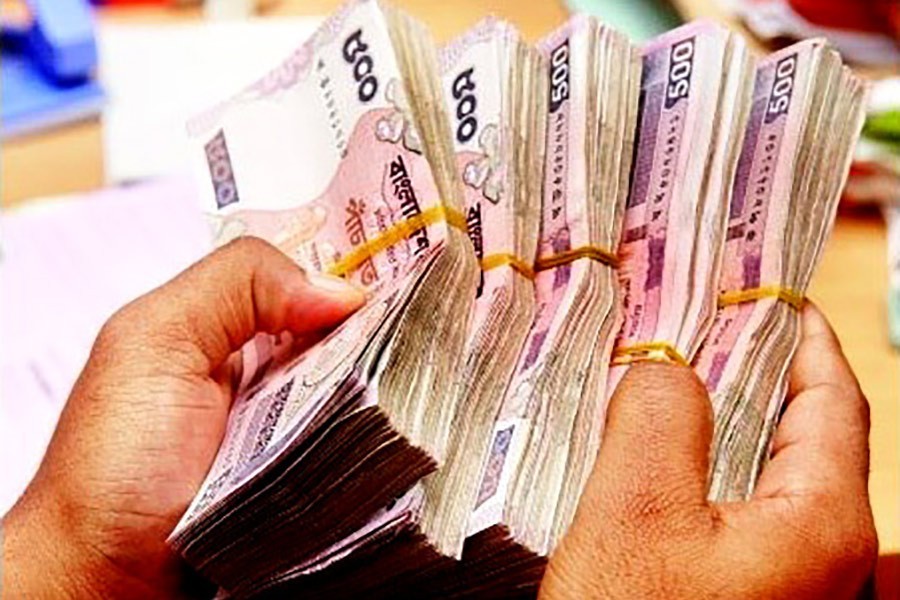The government offered a number of bailout packages worth more thanTk.1.00 trillion to cope with the adverse impacts of COVID-19. Obviously the onus of bulk financing has fallen on the banking sector. Banks are now hard-pressed to finance the packages. With a view to facilitating the implementation of the financial packages by the scheduled banks, Bangladesh Bank has so far taken multifarious measures. The scheduled banks of the country cannot but help the government particularly in times of the catastrophic situation, and as such they are to respond as quickly as possible. At the same time, they must look to their treasure to decide how much they can lend. Unfortunately, we are heading towards gradual erosion of liquidity level. We are worried over the volatility of the size of surplus liquid assets.
It is observed with a great concern that the size of excess liquidity in the banking sector has been shrinking down after December 2019 when the banks' excess liquid assets surpassed TK.1 trillion. As reported in Bangladesh Bank's Major Economic Indicators: Monthly Update Vol.05/2020 ( May 2020), the excess liquidity of the scheduled banks plummeted to 899.09 billion as of end-March 2020 from Tk.1056.90 billion (or Tk.1.06 trillion) as of end-December 2019.We have lost the 1.00 trillion mark. Due to lack of instant data, it is hardly possible to estimate the fate of liquidity position in the current month. However, the decline of excess liquidity by 17.55 per cent in March 2020 as compared to the balance in December last indicates that on an average, excess liquidity decreased by 2.73 per cent against a decrease of every 1 per cent in deposits. Deposits in April increased by 0.96 per cent only relative to those of March. Improvement of liquidity position mainly depends on the growth of deposits. The latest Cash Reserve Requirement (CRR) is 4 per cent on bi-weekly basis (effective from April 15, 2020). As a result, the amount of excess liquidity would go up in April 2020 and onwards due to a fall in CRR by 1.5 percentage points.
Our concern is considerably offset by the consolation that Bangladesh Bank relaxed some regulatory constraints to make more liquid assets available to the scheduled banks. Liquidity enhancing steps so far taken include lowering CRR to 4 per cent on biweekly basis and to 3.5 per cent on daily basis, raising Advance-Deposits Ratio (ADR) to 87 per cent for conventional banks and 92 per cent for Islamic Shariah-based Banks, and slashing repo rate to 5.25 per cent. Moreover, the central bank has agreed to assist the scheduled banks and the financial institutions to provide them with Repo facilities against the approved government securities maintained in excess of SLR coverage, specifically in view of special funding for COVID-10 led packages. Apart from those, Bangladesh Bank approved refinance facilities in some cases. However, a question crops up: is it feasible for the lending institutions to extend loans equal to the amount of their excess liquidity ?
Apparently, the figure stated above is close to the fund required to implement the stimulus packages. But the real capacity to lend has to be assessed separately. Financing stimulus packages has begun. It is learnt that the banks have so far disbursed more than Tk. 20.0 billion (up to June 18, 2020). We are eager to know how much the banks would be able to lend ultimately. If we desire that banks' health remains immune to risks of at least liquidity, is it justifiable to assist recovery of the health of other businesses quite impulsively at the cost of impairing the health of the banking industry, the most important pillar of our financial system?
As already pointed out, excess liquidity and lending capacity are not similar in terms of quantitative equality. From lending perspective, excess liquidity is subject to some deductions and additions too. Deductions usually include expected cash withdrawals, credit requests from valued and genuine customers, previous loan commitments, repayments of non-deposit borrowing, payment of operating expenses, meeting current liabilities, cash dividends etc. Cash inflows are additive but due to the impacts of COVID-19, inflows like loan recovery and new deposits seem to have little probability now.
In contrast to excess liquidity, the maximum amount a bank can lend ( or the lending capacity) would represent a portion of excess liquid assets adjusted after unavoidable deductions, additions, meeting ADR (which cannot be exceeded 87 per cent by conventional banks, and 92 per cent by Islamic Banks) and also considering Repo margin. It may be mentioned that excess SLR really consists of government approved securities such as T bills/ Bonds etc which will have to be converted into cash under Repo arrangements. As already stated earlier, Bangladesh Bank is ready to increase fund flows to the banks against the SLR-eligible securities. Bangladesh Bank has issued a circular introducing special Repo with a tenure of 360 days to make it match with the higher period of loans under different stimulus packages.
As the banks already hold outstanding loans and advances, the size of new financing would be finally determined by marginal ADR (i.e., unused ADR).We are not aware of whether the banks would have any other options to add to lending capacity with a view to positively responding to the dire need of the crisis-combating situation as explained. Another crucial issue to be kept in mind is that the banks must be prepared to meet the demand for government borrowing. Two panaceas can be conceived of -- deposit drive and all pervasive austerity drive. At least an emergency drive for rapid deposit growth should be launched as soon as possible. The policy makers, regulators and the bank authorities should revisit the agenda with new lens. Truly speaking, the lenders, the borrowers, the government, and the economy as a whole must survive minimally.
Haradhan Sarker, PhD, is ex-Financial Analyst, Sonali Bank and
retired Professor of Management.


